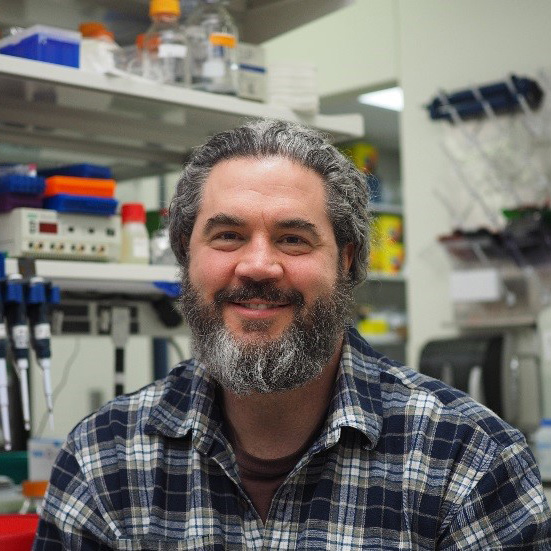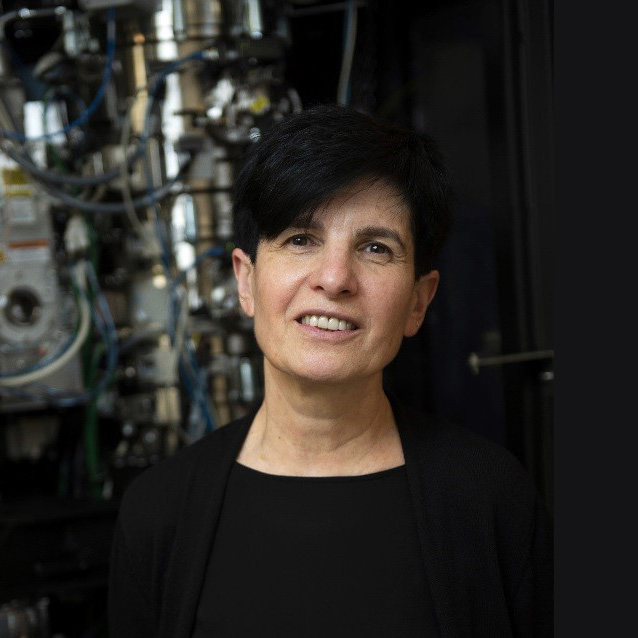Edwin R. Chapman, Ph.D.

- Title
- Professor, Investigator, Howard Hughes Medical Institute
- Department
- Neuroscience
- Institution
- University of Wisconsin-Madison
- Address
-
1111 Highland Ave.
Room 5505 - City, State, ZIP
- Madison, WI 53706
- Phone
- (608) 263-1762
- [email protected]
- Website
- http://neuro.wisc.edu/chapman/Chapman_Lab/Home.html

- Research field
- Neuroscience
- Award year
- 1999
- Pew distinction
- Innovation Fund investigator
Research
Our lab has several interests related to the mechanisms involved with membrane fusion, synaptic transmission, and synaptic plasticity: Our four main research projects relate to 1) The nanomechanics of Ca2+-triggered membrane fusion. These studies involve the analysis of a number of Ca2+-binding proteins (synaptotagmin, Doc2, otoferlin, rabphilin, etc.), as well as a number of other accessory proteins (nSec1, complexin, munc13, etc.) that regulate the core of the fusion apparatus—the SNARE complex—to control fusion reactions. We employ a diverse range of research tools to study membrane fusion, including biophysical (electrophysiology, imaging, etc.) and time-resolved biochemical (reconstituted fusion, stopped-flow kinetics, SPR, ITC, etc.) techniques. 2) How changes in the membrane fusion machinery underlie aspects of synaptic plasticity. Using electrophysiological approaches and modern microscopy approaches (confocal, TIRF, 2-photon, etc.), we are reconstituting and studying simple synaptic circuits to further our understanding of how connectivity impacts synaptic transmission, and to study the phenotypes exhibited by neurons cultured from genetically modified mice. 3) Structure and function of fusion pores. We study the structure and dynamics of fusion pores in neuroendocrine cells using carbon fiber amperometry and in neurons using optical approaches with single vesicle resolution. In our view, synaptic vesicle exocytosis often involves a kiss-and-run mechanism in which open fusion pores close without dilating to give rise to full fusion and bilayer merger. 4) Elucidation of the receptors, entry pathways, and the molecular basis for translocation across membranes, of botulinum (BoNT) and tetanus neurotoxins (TeNT). We are in the process of identifying the cell surface receptors, entry pathways, and mechanisms of translocation of these toxins. We are also using quantum dots to track their movement and putative transcytosis in simple neuronal circuits, and we are building “designer” toxin-receptor pairs to widen the range of cells that these toxins can enter.
As an Innovation Fund investigator, Chapman and his lab are teaming up with the lab of Dorit Hanein, Ph.D., to resolve the structure of cellular machinery that is critical for membrane fusion. This cellular machinery, which comprises several important proteins, plays a key role in the fusion of membrane vesicles containing neurotransmitters to the cell membrane, which results in the release of chemicals that relay signals between neurons. Together, Chapman, who has a well-established record of studying membrane fusion proteins, and Hanein, who brings expertise in structural biology, aim to investigate the remodeling of membrane structures during fusion and analyze individual events during this intricate process. This work could provide insight into the molecular mechanisms that mediate synaptic transmission, and more generally, into how membrane fusion events in eukaryotic cells occur.
Scholar Keywords
1999 Search Pew Scholars
- John D. Altman, Ph.D.
- Stephen C. Blacklow, M.D., Ph.D.
- Edwin R. Chapman, Ph.D.
- Kathleen L. Collins, M.D., Ph.D.
- Julia Promisel Cooper, Ph.D.
- James A. Goodrich, Ph.D.
- Mark W. Grinstaff, Ph.D.
- Bruce A. Hamilton, Ph.D.
- Rebecca W. Heald, Ph.D.
- Seung K. Kim, M.D., Ph.D.
- Makoto Kuro-O, M.D., Ph.D.
- Jeannie T. Lee, M.D., Ph.D.
- Roy M. Long, Ph.D.
- Kun Ping Lu, M.D., Ph.D.
- Matthew L. Meyerson, M.D., Ph.D.
- Dimitar B. Nikolov, Ph.D.
- Samuel L. Pfaff, Ph.D.
- John Sondek, Ph.D.
- Henrique P. von Gersdorff, Ph.D.
- Z. Hong Zhou, Ph.D.
